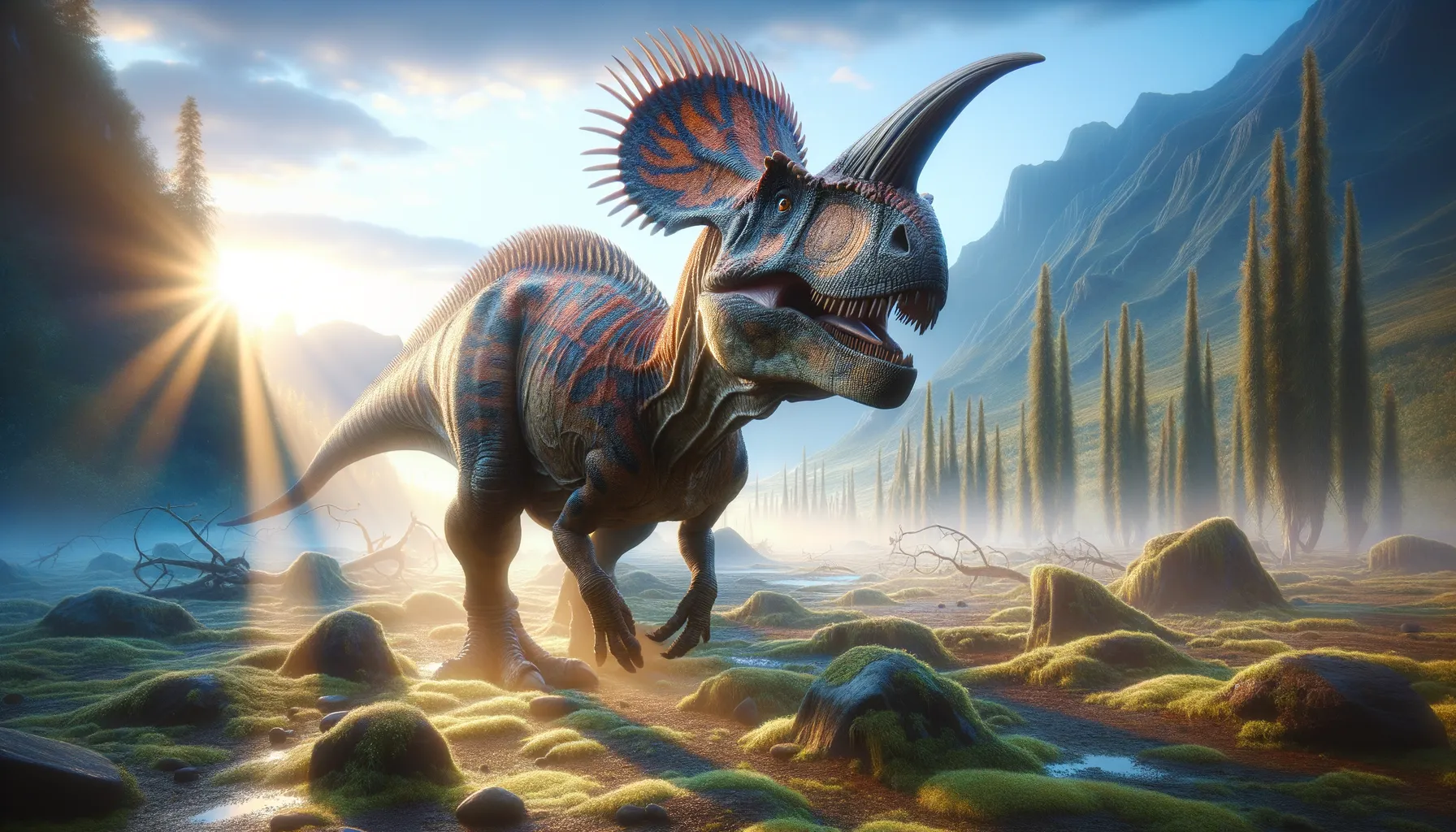
Anasazisaurus
Crested giant of the ancient past.
Period
Cretaceous
Length
Approximately 9 meters long.
Height
About 3 meters tall at the head.
Weight
Around 2 tonnes.
Anasazisaurus was a herbivorous dinosaur from the Cretaceous period that roamed what is now North America. It was characterized by its large size and crest-like skull, which may have been used for species recognition or communication. Despite its size, it was likely a slow-moving animal, relying on its bulk for protection. Fossils of Anasazisaurus have helped scientists piece together its lifestyle and the environment it lived in.
Diet
Anasazisaurus was a plant-eater, grazing on a variety of vegetation. Its diet likely included ferns, conifers, and flowering plants that were abundant during the Cretaceous period.
Hunting
As a herbivore, Anasazisaurus did not hunt other creatures. Instead, it grazed in groups which provided protection against predators.
Environmental challenges
Anasazisaurus faced several environmental challenges including fluctuating climates and competition for food with other herbivores. Seasonal changes would have impacted the availability of vegetation, requiring migration to greener pastures. Predators also posed a threat, with packs trying to separate juveniles or weaker individuals from the group.
Speed
Slow-moving herbivore.
Lifespan
Estimated to be around 50 to 70 years.
First discovery
Discovered in 1992 in New Mexico.
Fun Facts
- Anasazisaurus was named after the Ancestral Puebloans, commonly known as the Anasazi, in honor of the Native American culture of the southwestern United States.
- This dinosaur lived during the Late Cretaceous period, around 74 million years ago.
- Anasazisaurus was a plant-eating dinosaur, belonging to the hadrosaur family, which are often referred to as 'duck-billed dinosaurs.'
- It is believed that Anasazisaurus could walk both on two legs and on all fours, giving it flexibility in its movement.
- The first fossil remains of Anasazisaurus were discovered in New Mexico in the 1970s.
- Anasazisaurus had a distinctive crest on its head, though different from its relative, Parasaurolophus, whose crest was much more elaborate.
- Despite its large size, Anasazisaurus may have had predators, such as the fearsome Tyrannosaurus rex, which lived during the same time period.
Growth and Development
Young Anasazisaurus would have grown rapidly to increase their chances of survival against predators. Continued growth likely followed a steady pace until they reached full maturity. The development of their cranial crests might have played a role in helping them identify suitable mates or communicate with others.
Habitat
Anasazisaurus inhabited forested environments and open plains, which provided ample food sources. They thrived in regions with seasonal wet and dry spells, necessitating a mobile lifestyle in search of water. The diversity of plant life in their habitat supported their large size.
Interaction with other species
Anasazisaurus interacted primarily with other herbivores, often engaging in cooperative grazing. They maintained a vigilant watch for carnivorous threats, relying on numbers and communication to protect the herd. Competition for resources with other large herbivores could have led to migration and new grazing grounds.
Natural lifespan
They had an average lifespan of several decades.
Reproduction
Anasazisaurus is believed to have laid eggs, with nesting sites potentially shared among groups for protection. Once hatched, the young were likely cared for and protected by adults until they could fend for themselves.
Social behaviour
Anasazisaurus exhibited social behavior typical of gregarious herbivores, including group living and mutual protection strategies. They likely communicated through visual signals with their crests and auditory cues to maintain cohesion.
Fossil locations
Fossils of Anasazisaurus have been predominantly found in the Kirtland Formation of New Mexico. These sites have provided valuable insights into their anatomy and lifestyle during the late Cretaceous period.
